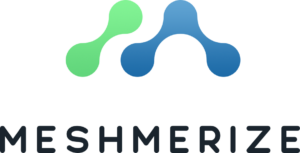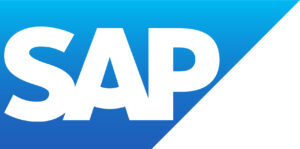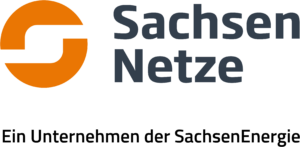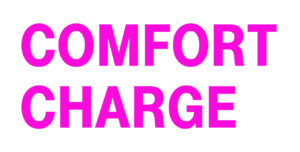Who are we?

Deutsche Telekom Chair of Communication Networks
Prof. Dr.-Ing. Dr. h.c. Frank H. P. Fitzek is leading the Deutsche Telekom Chair of Communication Networks with over 50 researchers. The main focus of the chair’s research is concentrated on future communication systems. Current research directions are Tactile Internet, Quantum Communication, and Post Shannon. The chair is intensively involved in the topic of Computing in Communication Networks, especially SDN, NFV, and ICN. Other research areas include network coding, cooperative networks, and robotics.
The chair is leading the excellence cluster Tactile Internet with Human-in-the-Loop (CeTI), coordinating the Center for Explainable and Efficient AI Technologies (CEE-AI), and is partner in the following projects: 5G Insel, AI4mobile, Hexa-X financed by DFG, BMBF, and EU.
In addition, Professor Fitzek is the coordinator of the 5G Lab Germany at the TU Dresden, which encompasses an interdisciplinary team of 23 professors and almost 600 employees from various research institutes. He also coordinates the large-scale project 6G-life, which is funded by the BMBF and realized together with the Technical University of Munich. The project explores potentials and use cases of 6G communication networks.
Bilateral research projects are currently carried out with (in alphabetical order) Deutsche Telekom AG, Ericsson, and Magna.
In most of the aforementioned research topics, we collaborate with Massachusetts Institute of Technology (MIT), Aalborg University (AAU), Technical University of Munich (TUM), and Budapest University of Technology and Economics (BUTE). Several projects are carried out with our partners from acticom GmbH, Chocolate Cloud ApS, Campus Genius, Code On Technologies, Meshmerize, Mimetik, Steinwurf ApS, and Wandelbots GmbH.

Meshmerize
The Meshmerize GmbH is a spin-off of the TU Dresden with the goal of networking industrial robots, drones, vehicles, and other machines in dynamic scenarios. To this end, the team has created a new generation of communication protocols for resilient, secure, wireless, and stable mesh networks. This technology has been proven to lead to higher levels of automation and hierarchical network systems in many application areas. Meshmerize has pioneered the ideal trade-off between the reliability of 5G systems and the ubiquity of WiFi networks

Campus Genius
CampusGenius GmbH is a spin-off of the TU Dresden. CampusGenius designs, builds, integrates and operates 5G campus networks for various industries, from manufacturing to construction to aviation. Campus networks enable automation through improved and more reliable wireless communications with the 5G mobile standard. For proof-of-concept scenarios, CampusGenius has transportable 5G campus networks (5G-SA), and is also developing its own fully virtualized and containerized 5G core.”

SAP
As a market leader in enterprise application software, SAP helps companies of all sizes and in all industries run at their best. Our machine learning, Internet of Things (IoT), and advanced analytics technologies turn businesses into intelligent, sustainable enterprises and SAP applications and services enable business and public customers across 25 industries globally to operate profitably and adapt continuously. With a global network of customers, partners, employees, and thought leaders, SAP helps the world run better and improve people’s lives. For more information, visit www.sap.com
The electric power ecosystem is moving toward a decentralized power supply and distribution system in which the residential customer is more than just a consumer. Today’s power grids use a centralized power distribution architecture in which power companies are responsible for generating and distributing power to end users. However, more and more citizens are choosing to purchase power generation equipment based on renewable energy sources. Promoted by the federal government due to environmental, social, and economic benefits, households with renewable energy sources such as solar panels or wind generators, also known as distributed energy resources (DERs), can operate independently of electricity providers and sell excess energy back to the main grid, transforming the power grid. These DERs operate at the power distribution level of the grid and are connected to the distribution grid through grid-connected inverters.
SAP Focus & Scope
The Project focuses on providing technologically advanced and highly efficient energy management tools. This, will greatly facilitate the transition to future energy systems. Enabled by the successful N5GEH application platform, DymoBat will strive to achieve the following goals:
By balancing the power profile of energy grids (i.e., supply-demand balancing), leading to better resource utilization, tomorrow’s energy systems will be optimized. To realize the full integration of renewables into the power grid, the challenges faced by Distributed Energy Resources will be addressed, leading to reduced CO2 emissions and increased community self-sufficiency. There is also a determination of the technological readiness of the current infrastructure in the energy sector, as well as telecommunications and information technology, to enable the transition to future energy systems.

Landeshauptstadt Dresden
As one of the “100 Climate-Neutral and Smart Cities by 2030”, the state capital Dresden represented by the “Smart City” department of the Office of Economic Development is taking an active pioneering role. In innovative, national and Europe-wide projects, such as the current expansion of the LHD’s own charging infrastructure at its offices and in public spaces, the Smart City department is developing and shaping a future vision for sustainable living in an innovative city. In particular, the focus is on mobility and energy management. For the comprehensive integration of renewable energies in the transport sector, the LHD draws on the findings in the identification and use of flexibilities from the SINTEG Reallabor (WindNODE).

Sachsen Energie
SachsenEnergie reliably supplies people, companies, and communities in Dresden and eastern Saxony with electricity, gas, heat, water, fast Internet, energy-related service, and modern infrastructure. As the largest municipal utility in eastern Germany, the company creates the best quality of life here in our region. Our customers benefit from tailored energy services – whether electromobility, self-generation plants, and consumption optimization. In the DymoBat project, we are focusing on electromobility.
SachsenEnergie AG takes on the role of a charging point operator (CPO) in the project. This includes the planning, installation, and operation of bidirectional charging facilities, including their integration into the ICT infrastructure and the back-end system. This will enable the project to implement the algorithms to be developed in the project in a testbed. The work topics of SachsenEnergie in the DymoBat project are the installation of bidirectional charging points, the integration of the charging points into the backend system, and the development of billing algorithms for bidirectional charging for charging point operators.

Sachsen Netze
SachsenNetze GmbH is the distribution system operator for East Saxony including Dresden. SachsenNetze is a neutral infrastructure service provider for efficient energy markets. We assume an active role with more tasks within the system and we want to use flexibilities for efficient grid operation. By providing system services, we assume responsibility for the security of supply. We are responsible for processes, switching and data keeping in our own grid.
SachsenNetze is partner to the TSO according to Sections 13 & 14 of the German Energy Industry Act on intensified cooperation and active participation in the future provision of system services. Further development of the “grid traffic light” and co-ordination of an increasing number of stakeholders and flexibilities is the focus. To answer future challenges by using flexibility of the distribution grid we put our attention towards innovative projects like DymoBat.
Role in the DymoBat project:
As SachsenNetze GmbH we strive to aid the success of the DymoBat project by acting as an active dialogue partner, which supplements the work-package leaders with suggestions, concepts as well as discussions on their evolution towards their vision.

Comfort Charge
Comfort Charge GmbH is a young company based in Bonn. As a daughter company of Deutsche Telekom, Comfort Charge operates charging stations
for e-vehicles throughout Germany and offers services for other charging providers (EMP) and technical operators (CPO). Since its foundation (2017), Comfort Charge GmbH has been expanding a public charging network in Germany, preferentially using Deutsche Telekom’s existing telecommunications
infrastructure. Comfort Charge fills the role of a charging point operator in the project. This includes the planning and installation of bidirectional
charging facilities with a battery storage system and their integration into the ICT infrastructure as well as into the back-end system. This will enable
the project to implement the algorithms in a testbed and at the same time to test, analyze and define the possibilities and technical framework for
providing fast charging points in areas with low grid capacity.
The main focus of Comfort Charge in the DymoBat project is to collaborate in the development of a feedback path from the vehicle (battery) to the public grid and establish bi-directional charging points. Bi-directional charging stations place special demands on the local power grid. In contrast to classic photovoltaic feed-in, with decades of operational experience in the energy industry in terms of construction, control, operation, and billing with different manufacturers, bidirectional energy feed-in or feed-out via a battery electric vehicle is new territory. This applies to a manufacturer of charging infrastructure, a connection network operator, a charging station operator as well as the interaction of the necessary IT-based back-end systems. The task here is to evaluate suitable charging technology on the market.
For Comfort Charge, this project has manifold goals, which are named and described in the following:
i.) Introduction of bi-directional charging technology into the public domain, thus enabling the vehicle battery infrastructure to be used as energy storage for public use.
ii.) Reduction of CO2 emission and sustainability by using these additional energy sources.
iii.)A more efficient use of these resources through the collection of data on charging operations and storage possibilities.
iv.) Further optimization of communication for data content about and around charging operations, especially in the interaction between the vehicle and the public grid.
v.) Facilitating the use of these charging operations through this standardization and new billing algorithms.
vi.) A dynamic harmonization in resource management in the network.
